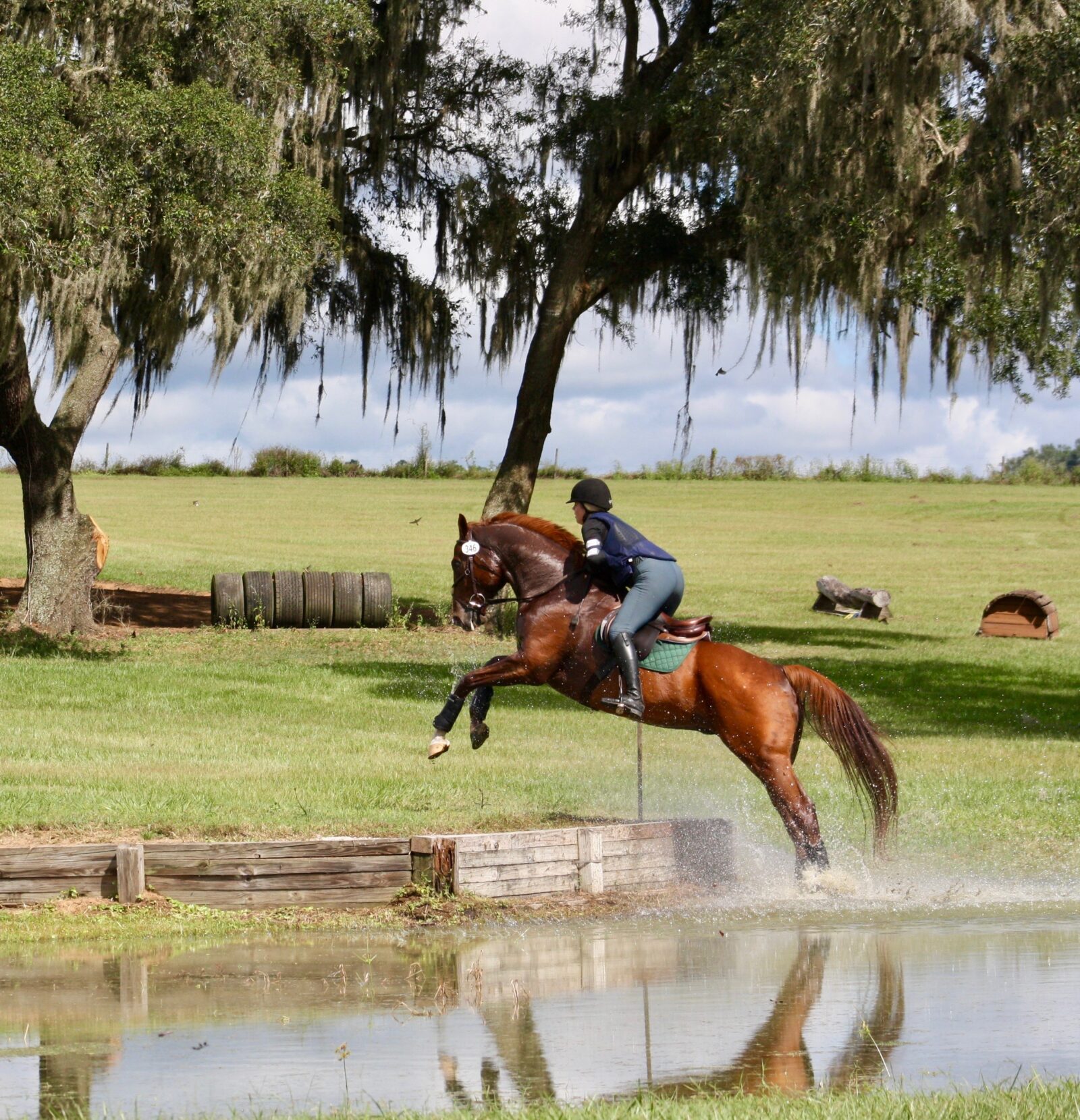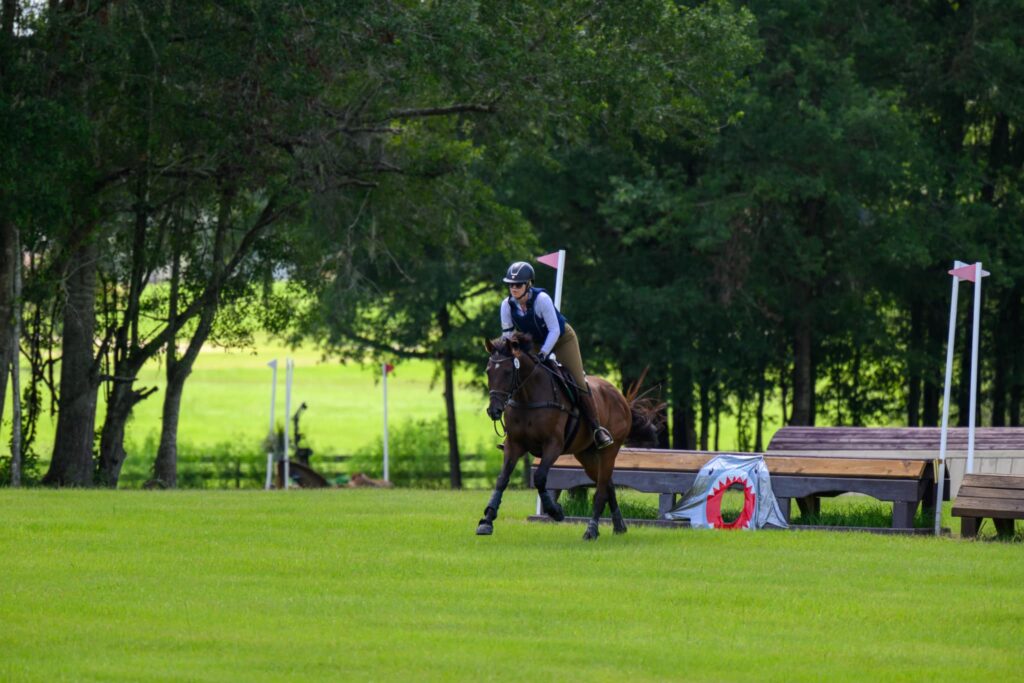What Is An Eventing Derby? And Why Must I Enter One Right Now?

You’ve heard of hunter derbies (think: shadbellys and hunter plaits). The Kentucky Derby. The Mongol Derby. But what about an eventing derby?
Generally speaking, an eventing derby is a combined test-type horse trial which allows for competitors to jump a series of show jumping and cross-country elements in one timed course. Some eventing derbies are offered as a two-phase event: a dressage test is scored like any other horse trial, coupled with the score of the jumping phase. Some eventing derbies run just as the jumping phase. There is no association-recognized format to this type of competition (though the U.S. Eventing Association Young Event Horse series often mimic a similar jumping and gallop test format and some derby events in Europe are offered at higher levels), but “eventing derbies” can be found at grassroots-type schooling shows all over the country.
In many cases, it’s a friendly, casual way for riders not versed in three-day eventing to dip their toes into the discipline. It’s a safe way for riders to try out solid cross-country elements like logs, banks and water fences while still jumping around a technical course.
“We did our first eventing derby of the season in June (last year) and it was our biggest show of the year,” said Courtney LaBarbera, who organizes a series of eventing derbies at Fox Run Farm in upstate New York.
“The biggest takeaway we see is this is a great opportunity for to school young horses and green riders,” she said. “It’s a horse show appropriate, safe venue that won’t break the bank and gives the horses a good experience.”
What to know:
An eventing derby is a great way to school the phases of three-day eventing. Some horse shows offer eventing derbies that include a dressage test (usually tied to the USEA divisions and corresponding jump heights) with a course of show jumps and cross-country elements of 15-22 fences. The derby is scored similar to a true horse trial: the lowest penalties (dressage score + timed jumping course) wins.
Some eventing derbies just run the jumping format of 15-22 show jumping and cross-country elements. The rider with the least amount of penalties (refusals) and closest to optimum time is the winner.
Other rules may differ depending on the venue. Fox example, this is how Fox Run Farm runs their divisions.

What to wear:
Like for cross-country schooling and showing, a ASTM standard or certified by the Safety Equipment Institute body protector vest and air vest are the norm. Helmets, appropriate boots and riding clothes are required. While riders are no longer required to wear medical armbands or bracelets in show jumping at USEA recognized events, they are required on cross-country, and at many schooling shows. The arm bands can be purchased online and include space for riders to include their personal medical history, in case of an emergency.
Appropriate fitting tack is also important. Breastplates and running martingales are safe for cross-country, though standing martingales (as seen in the hunter disciplines) are not allowed under USEA rules for safety reasons. Boots appropriate for field and water riding are generally OK to use. (Rules for tack and bitting differ for the dressage phase. Reach out to your show organizer or use the USEA rulebook as a guide if you have questions).
How to prepare:
The best part of eventing derbies is they are often casual and low-key horse shows. Besides having a sound horse and the appropriate gear, there’s not much else you need to give it a go. Be open to learning more about the sport and the norms in the warm-up ring. Listen to your ring stewards and be mindful of your ride times.
But most of all, be prepared to have fun!
Want to support an eventing derby? Fox Run Farm is always looking to partners who want to support the community. Learn more here.


